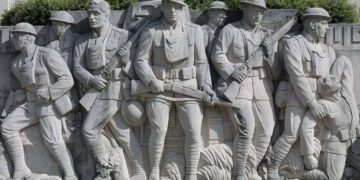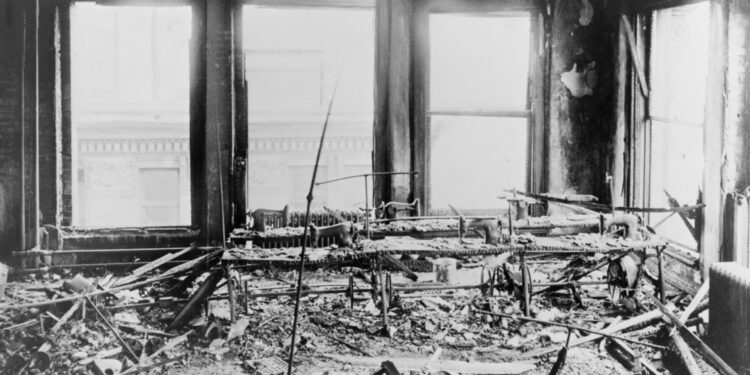No one is entirely sure how the fire started. Our best guess is that someone carelessly discarded a cigarette into a bin of fabric scraps. But it also doesn’t really matter.
What did matter was that there was no way to fight it or even escape. In just 18 minutes, 146 were dead and hundreds of thousands of New York laborers were mad.
Working conditions in New York City factories in the early 20th century were not ideal. For instance, Max Blanck and Isaac Harris’ Triangle Shirtwaist company employees on the 8th, 9th, and 10th floors of the Asch building in downtown Manhattan worked 12-hour shifts for $15.00 a week (or $490 when adjusting for inflation). Most of them were young immigrant women who could barely speak English. The work was monotonous, and their employers didn’t trust them. (READ MORE: History Isn’t All Black and White. Just Look at Israel.)
The workplace certainly didn’t meet any kind of common-sense safety code. There was a fire escape, but it was rickety. There were four elevators and three of them didn’t work. There were two stairwells, but one door only opened inward, and the other was locked. There were no sprinklers and, as it turned out, no access to water.
It wasn’t that Blanck and Harris hadn’t considered common sense safety measures. They had a history of torching factories after work hours to make massive insurance claims — which made them loathe to install sprinklers or make sure that the hose wasn’t rusted shut. Having no way to fight a fire was intentional, as was the fact that they were on the top three floors of a Manhattan office building. Firefighting hoses in New York in the early 20th century only reached the 6th floor.
But although the conditions for the fire were certainly intentional, the fire itself was not. For one, Blanck and Harris were actually in the building when it started and it seems unlikely that they had any intention of putting themselves in danger. They managed to escape onto a neighboring roof. Many of the women who worked for them were not so lucky. (READ MORE from Aubrey Gulick: Our Historical Narratives Should Account for Fear)
The fire escape collapsed; even if it hadn’t, it would have taken hours to empty the building that way. The singular elevator (which could hold just 12 women) managed three or four trips before it broke down. Many of the women panicked and jumped.


The interior of the Triangle Shirtwaist Company factory after the fire on March 25, 1911 (Everett Collection/Shutterstock)
The tragedy shocked the city (it would remain the deadliest workplace tragedy until 2001). Just days later, hundreds of thousands of New Yorkers turned the funeral into a massive protest demanding safer working conditions — and it worked. Politicians sensed that sprinklers would get them reelected, so they mandated them.
In fact, the resulting workplace safety codes became a model for legislation that was developing across the country at the behest of labor unions that were growing in influence and power. (READ MORE: Why Labor Unions Won’t Save Higher Education)
As for Blanck and Harris — they were accused of manslaughter and then let off the hook. They then turned to the insurance companies, claimed massive damages, and even made a bit of money on the tragedy.
This article originally appeared on Aubrey’s Substack, Pilgrim’s Way, on March 25, 2024.

































 Reaction & Commentary
Reaction & Commentary




















